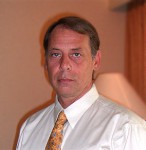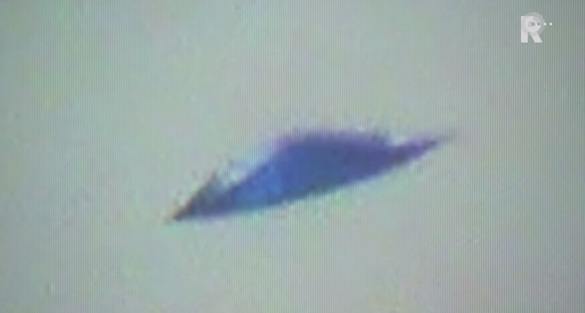
Ted Roe, the executive director of one of the most respected aerial phenomenon study groups, the National Aviation Reporting Center on Anomalous Phenomena (NARCAP), is seeking to start a peer reviewed journal on Unidentified Aerial Phenomena (UAP) research. Roe is working on this effort with UFO researcher Erica Lukes. Both of them will be appearing at the 2017 International UFO Congress.
Here is a letter Roe sent to OpenMinds.tv regarding this new project…
Fellow UAP Researchers,

Until now UAP research and publication has generally taken place in a vacuum whereby a researcher or team publishes its findings, generally without outside peer review and support, on its website or in a public archive and there the data languishes in obscurity.
The International Association of UAP Researchers (IAUAPR) has been established specifically to serve the International UAP research community with an authoritative, peer reviewed, international journal supported by an active, multinational membership composed of credentialed scientists, expert efforts of merit and the supporting public.
Journal of the IAUAPR ~ Call for Papers, Articles
The Journal of the IAUAPR recognizes the broad scope of UAP research including historical studies and encourages submissions of historical articles or papers. Scientific research papers addressing topics ranging from studies of earthlights, earthquake lights, rare lightening, volcanic lights and others, as well as those lights and objects that seem provocative w/respect to the Extraterrestrial hypothesis are also encouraged. The Journal of the IAUAPR is intended to support UAP-related studies arising from diverse fields like atmospheric physics, plasma physics, geophysics, geology, psychology, anthropology, archeology, neurophysiology, theoretical physics, exobiology/bioastronomy/astrobiology, and more.

Membership in the IAUAPR – College of Experts
The IAUAPR offers two types of membership. Associate Member/donor and College of Experts.
Associate members receive newsletters and copies of the journal when its released, advance notice and discounts to events and activities.
The IAUAPR College of Experts is an active membership and requires approval. Members of the College of Experts participate in refereeing and coaching studies and publications, develop, design, implement and participate in organizational initiatives, serve on the science board and in focus groups. They choose members of the Science board, serve on the Editorial Board and generally provide expert support. College of Experts members have either a relevant academic credential or are published experts that meet the standards of publication for the IAUAPR.
Currently, the IAUAPR is operating as an Unincorporated Not for Profit Association. The trending model is towards a 501c3 charitable nonprofit. Ideally, a foundation can be established to provide research funding grants.
The UAP research community is composed of a number of research teams and efforts of merit…. What has been lacking is an international authoritative peer reviewed journal to highlight the work of those teams and individuals and to promote it globally. By creating a peer reviewed EJournal supported by an international community of UAP researchers the standards and goals of UAP science and investigation should be furthered.

The International Association of UAP Researchers is founded to meet the following goals:
- Provide a coherent international organization for UAP researchers addressing all varieties of UAP manifestations
- Set and maintain Scientific standards and practices for UAP research and publication
- Referee and coach studies and publications to meet international standards of science documentation and reporting and/or historical analysis and presentations.
- Encourage International dialogue and development
- Publish a peer reviewed Journal of UAP research semiannually or quarterly
- Provide a yearly conference and a series of symposia, and a series of events to highlight and promote research, researchers and the subject of UAP research.
- Provide a publication point for all varieties of UAP research, from Earthlights and Earthquake lights, Psychological studies, Atmospheric physics and plasma physics to UAP and UFO reports and studies, historical examinations, etc.….
- Develop and maintain a general bibliography of quality UAP studies and related publications.
By providing an international, peer reviewed context, we are taking the next, and appropriate, steps towards engaging the science community with respect to UAP manifestations.

This effort will include:
- A peer reviewed Journal
- An active, International, College of Experts
- A functional Administration program to address Outreach, Promotion, Funding, Publication, Events, Operations.
It is sometimes said that a “bar has been set” meaning that standards have been established, or “the bar has been raised” suggesting that standards are higher… In the study of UAP there have been, generally, no standards. The establishment of an authoritative peer reviewed journal and supporting association of researchers effectively sets the standards, the bar, higher. Ideally, on par with other scientific research associations and journals.
Regards,
Ted Roe
Executive Director
IAUAPR
Special thanks to Erica Lukes, IAUAPR Director of Communications, for making us aware of this effort. For more about the IAUAPR, visit IAUAPR.org.





I am a Ph.D. in Religious Studies, professor of RS at the University of South Florida in Tampa, FL. My publications are mainly in the archaeology of Israel in the late Hellenistic to the Byzantine periods. I have been a professor for 44 years and am still employed as such 100%. I welcome the establishment of this scientific journal, and I hope it gains support in the academy. I have had an active interest in UAP research and its implications and have often lamented that many serious scientists regard the field of inquiry as a tar baby that will cause them professional harm, not advancement, if they participate. I have shared that worry for myself, but what can they do to me now?